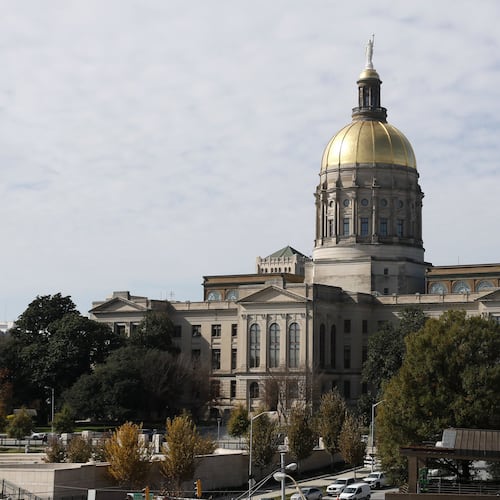Sophia Rois Geffen was working in public health when she decided to train as a nurse so she could connect more closely with people.
With graduation from the Johns Hopkins School of Nursing about six months away, she and other fellow Hopkins nursing students realized most patients won’t see their faces, masked against the persistent coronavirus.
It’s one of the many ways the landscape has changed and challenged nurses in the past two years. But it’s not deterring Geffen and her classmates from running headlong into a pandemic that pushed many experienced professionals to the exits and created a massive shortage of nurses nationwide.
“We all came in pretty starry-eyed,” she said. “Now, we understand it’s a challenging time just to be in the profession.”
Credit: contributed
Credit: contributed
There are big gaps, with nursing vacancies up 45% from a year ago across the nation. The U.S. Bureau of Labor Statistics expects 500,000 more nurses to quit this year, leaving the nation short 1.1 million nurses.
Nurses from the Baby-Boom generation have been retiring in large numbers. That – coupled with the pandemic – means hospitals across the country just don’t have enough of these front-line care providers.
So, lawmakers, nursing schools and others are now taking steps to boost the nursing workforce and keep skilled nurses on the job.
A focus on diversity
In Maryland, there are more than a dozen universities and community colleges training nurses and administrators. And they have begun to recruit more students and instructors to more sites.
At the University of Maryland School of Nursing, enrollment at the school’s Rockville campus in the Washington suburbs grew to 200 this year from 120 or so in recent years.
And Jane M. Kirschling, the university’s dean, is hoping for a return to positive images of nurses, who were hailed as heroes early in the pandemic but now feel forgotten or worse.
“One thing we need to be careful of is portraying nursing as not a desirable career, that we don’t need nurses or that maybe if they become a nurse they won’t be employed,” she said. “The truth is, they will have tremendous flexibility over the course of their career.”
Sarah Szanton, dean of the Johns Hopkins School of Nursing, also said she wants more positive marketing to attract more students from “all walks of life.” That includes racially diverse applicants, she said, but also men, who make up only 13% of students there.
The school is creating scholarships with millions in philanthropic dollars to make school more affordable. The average nursing student graduates with $110,000 in debt, but their first job pays an average of $66,000 a year, Szanton said.
It also means boosting Hopkins’ annual nursing graduation goal to 400 from 300.
“We turn down thousands of qualified applicants a year,” Szanton said. “If nursing schools were able to take them, it would make a big dent in the shortage.”
‘emotional roller coaster’
Back at the Johns Hopkins School of Nursing, many students are turning to nursing as a second career and obtaining advanced degrees.
That, Szanton said, can put them on a path toward teaching, research or launching health care startups.
Geffen, 30, is switching careers. She holds a masters of public health from Hopkins and returned for the nursing program so she could enter clinical work.
Most recently, she was a contact tracer in her native Boston, notifying those exposed to the coronavirus. She also worked in the LGBTQ community and wants to use her new training to more directly ensure equitable access to health care.
Geffen speaks Spanish and hopes that will help lift another burden on disenfranchised patients.
The scholarship from Hopkins, she said, “was an enormous factor for me.” Tuition in Hopkins’ master’s program in nursing exceeds $65,000 a year and can top $100,000 for all costs, according to the Hopkins website.
“The emotional roller coaster that comes from hearing about student loan forgiveness on the national stage — it’s exciting, but you don’t want to get your hopes up too much,” she said.
“It would offer freedom for so many people, especially people who don’t come from a higher socioeconomic status. It would also help develop a workforce that looks like the population they serve.”
President Joe Biden delayed some school loan payments during the pandemic, and there are other loan forgiveness programs. But advocates say more needs to be done to forgive debt for medical professionals.
Maryland advocates are backing legislation during the General Assembly session underway aimed at reducing nursing debt, similar to a program for doctors who practice in underserved urban and rural areas of Maryland.
In the meantime, Geffen remains eager to graduate in August and go to work. But she agreed there need to be policies and practices to show nurses they are valued. That means providing proper protective gear, sick leave, crisis pay and student loan forgiveness.
“This advocacy and these protections,” she said, “can serve as a promising antidote to the moral injury nurses are currently facing.”
This story first appeared in The Baltimore Sun. It is distributed by the Tribune Content Agency.
About the Solutions Journalism Network
Each week, as part of our solutions-oriented focus, The Atlanta Journal-Constitution partners with the Solutions Journalism Network, a nonprofit organization dedicated to rigorous reporting about social issues. This week’s content comes from other sources.
About the Author
Keep Reading
The Latest
Featured

